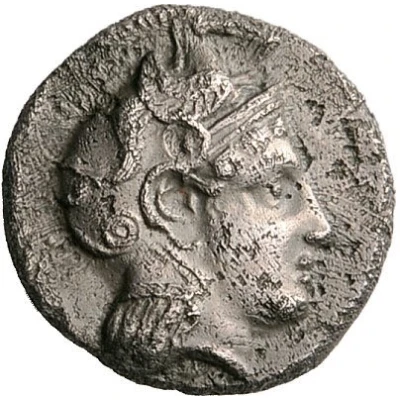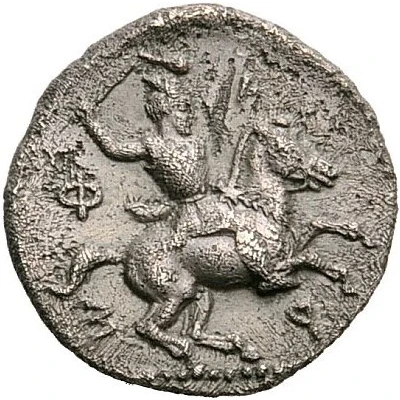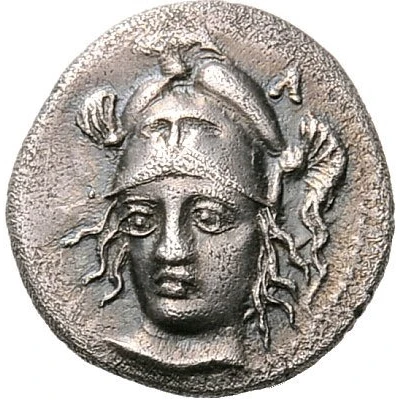


© Nomos AG
Trihemiobol 425 BC - 375 BC
| Silver | 1.45 g | - |
| Issuer | Pharsalos (Thessaly) |
|---|---|
| Type | Standard circulation coin |
| Years | 425 BC - 375 BC |
| Value | Trihemiobol (¼) |
| Currency | Drachm |
| Composition | Silver |
| Weight | 1.45 g |
| Shape | Round (irregular) |
| Technique | Hammered |
| Demonetized | Yes |
| Updated | 2024-10-10 |
| Numista | N#171243 |
|---|---|
| Rarity index | 100% |
Reverse
Thessalian cavalryman riding horse galloping to right, wearing petasos, chlamys and chiton, and brandishing a lagobolon with his right hand
Script: Greek
Lettering:
Φ Α
Ρ Σ
Comment
Apparently unique, unpublished and unknown to Lavva.
Interesting fact
The Trihemiobol coin from Pharsalos (Thessaly) was used as a form of currency in ancient Greece during the 4th century BC. Its name "Trihemiobol" comes from the Greek words "tri", meaning three, and "hēmi-", meaning half, referring to its value being equal to three obols, which was a fraction of a drachma, the standard unit of currency in ancient Greece.



